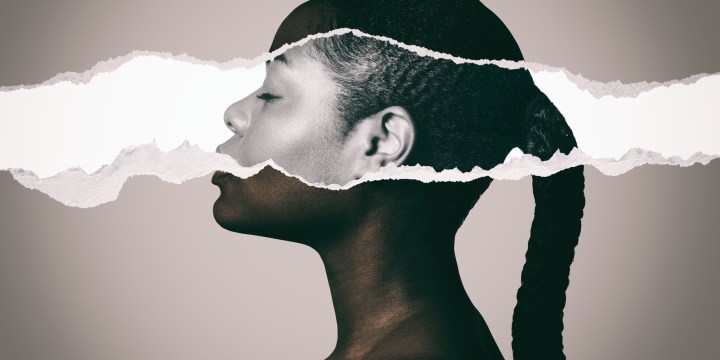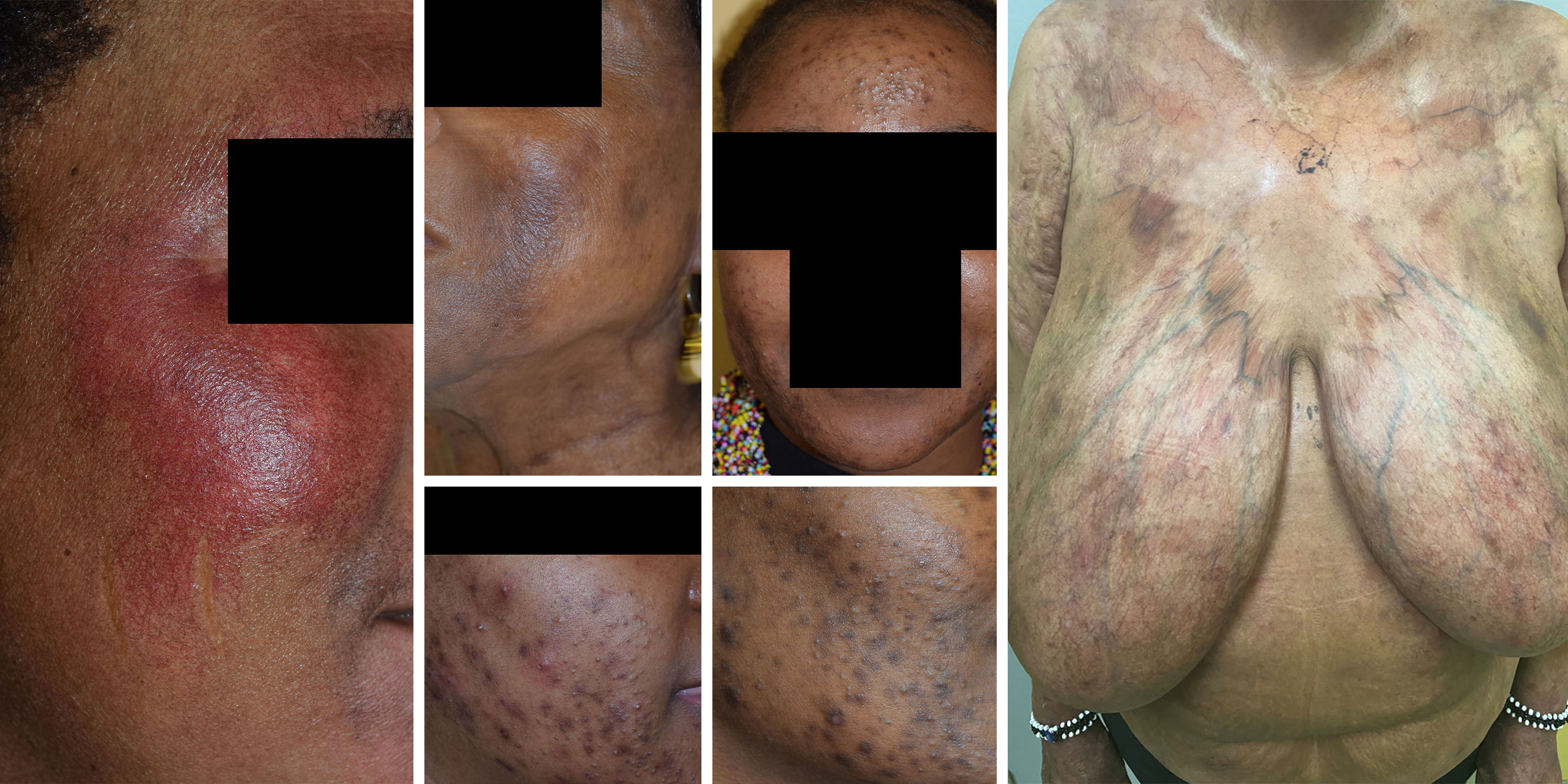SNOW WHITE’S TOXIC DWARFS (PART TWO)
Health hazard: Women scarred for life by poisonous chemicals in skin-lightening creams

Millions of women across Africa and the world have been scarred for life or suffered very severe health damage due to a range of toxic additives such as mercury, lead and hydroquinone in skin-lightening creams.
Gugu Mvelase* is thankful that her flirtation with skin-lightening creams was brief.
Two years ago she started using a powerful cream that “really messed up my skin”.
“I was buying them from a lady who has an office next to a doctor’s rooms in central Durban – so I was under the impression that the products were safe.
“I’m a very dark person and I also had acne. But after six months, my skin was terrible and it had turned at least two shades lighter. My friends knew something was going on and this also started to affect my confidence.”
Why did she want to make her skin lighter?
“I don’t know, really. I was 30 at the time. It’s just society, I guess. If you are lighter, you are… more beautiful. I didn’t have a specific reason. But I wanted to be more noticeable.
“Now I realise it was the biggest mistake of my life – I learnt the hard way. Thankfully, I stopped using them after receiving proper medical advice, before there was permanent damage. Now I am back to my natural dark complexion.”
Gugu was lucky. Millions of women across Africa and the world have been scarred for life or suffered very severe health damage due to a range of toxic additives such as mercury, lead and hydroquinone.

Skin-lightening creams can cause irreversible damage to the skin, such as ochronosis or lesions. (Photos: Supplied)
Yet the severe health risks of mercury have been known for hundreds of years. In 1687, for example, French chemist Marie Meurdrac recommended that mercury and other heavy metals be completely avoided for skin bleaching.
“In addition to destroying the beauty of the face with long use, they produce very troublesome and occasionally incurable illnesses, and it is of this that ladies must beware,” she warned.
During the 18th century, English hat makers used mercuric nitrate to stiffen felt hats, often working in poorly ventilated rooms. Over time, many inhaled mercury vapours and developed psychosis, excitability and tremors – symptoms that became so common in hatters that the phrase “mad as a hatter” was born.
In Cato Ridge, KwaZulu-Natal, several workers died or became severely disabled in the early 1990s after being exposed to mercury fumes at the Thor Chemicals plant.
Globally, the most dramatic evidence of health damage from mercury exposure occurred in Japan, due to liquid industrial wastes that poisoned fish and shellfish in Minamata Bay between 1932 and 1968.
This led to thousands of cases of Minamata Disease, which included symptoms such as depression, insomnia, tremors, delirium, lung injuries and kidney collapse. In some cases, infants born to exposed mothers suffered brain damage and severe deformities of the limbs.
This health tragedy later gave birth to the Minamata Convention on Mercury.
***
The Minamata Convention
Named after the devastating wave of mercury-related sickness that affected thousands of people around Minamata Bay, Japan, this international convention came into force in 2017 and aims to rapidly reduce global supply and demand for mercury.
It bans new mercury mines, while existing mines can continue for only 15 years after a country joins the treaty.
The convention also aims to phase out or reduce mercury use in a number of products and processes.
Several of these phase-outs became effective from January 2021, to ban or restrict mercury-containing products that include some batteries, compact fluorescent lamps under 30 watts, cosmetics (such as skin-lightening creams), pesticides and thermometers. Dental fillings which use mercury amalgams are also regulated under the convention to phase down their use.
The convention was a result of just three years of meetings and negotiations by delegates from nearly 140 countries and was signed in 2013.
The objective of the Minamata Convention is to protect human health and the environment from human-influenced emissions of mercury and mercury compounds.
Every year up to 9,000 tons of mercury is released into the atmosphere, in water and on land. The largest source of mercury emissions is artisanal and small-scale gold mining, followed closely by burning coal for electricity and industrial heat, non-ferrous metal production and cement production.
***
More recently, researchers have reported several cases of Kenyan women suffering kidney damage after frequent use of commercial skin-lightening creams.
Recent case studies among Mexicans living in California have emphasised the severe risks, not just for the women who use them, but also their children and other family members.
In 2014, doctors in California diagnosed mercury poisoning in a 20-month-old baby suffering from hypertension, refusal to walk, irritability, difficulty sleeping and poor appetite. The skin-lightening cream used by the mother contained 38,000 ppm of mercury. Researchers suggested the most likely exposure contamination route was through physical contact with the mother and contaminated household items.
In a second case, a 17-year-old boy was admitted to an intensive care unit after using a non-commercial, artisanal cream from Mexico to treat acne. His symptoms progressed rapidly from weakness in his legs to involuntary muscle twitching. Later he developed severe back pain, visible muscle-twitching, unsteady gait, delirium, agitation, sleep disturbances and profuse sweating.
He had only been using the acne cream twice a day for about six weeks before the onset of symptoms. Eleven family members were found to have very high mercury levels and almost all furniture and personal belongings in the home were discarded as hazardous waste. The creams were later tested and found to contain between 96,000 ppm to 210,000 ppm of mercury.
And yet, skin-lightening creams with very high mercury levels are still on sale across South Africa.
Though local sales volumes remain unclear, there are some indications that the use of various skin-lightening products is growing – popularised in part by entertainers such as Khanyi Mbau, Sorisha Naidoo or the late Kwaito star Nomasonto “Mshoza” Maswanganyi.
At a global level, the World Health Organization suggests that the skin-lightening industry is one of the fastest-growing beauty industries worldwide and is estimated to be worth $31.2-billion by 2024.
Professor Ncoza Dlova is an internationally renowned Durban dermatologist who has seen scores of patients whose skin was damaged permanently by these creams.
Dlova, who is also Dean and Head of the School of Clinical Medicine at the University of KwaZulu-Natal, describes the skin-lightening phenomenon as a sociopolitical issue that dates back to the days of African-born slaves in North America who believed they would be better off with a lighter skin.
“If you had lighter-coloured skin you were able to work inside the master’s house, but if you were darker, you had to work outdoors.
“In South Africa, some domestic workers darker in shade were also told to make their skins lighter – this is documented in anthropology literature by Professor Lynn Thomas from Washington University in Seattle.”
Some creams were also used by several white women in the past.
“There was this notion that women who had darker skins from working outdoors were poor – so they started using bleaches. Now, it’s the other way round for white women. The more suntanned you are, the richer you appear, because your suntanned skin is proof that you can afford a beach holiday in an exotic location.
“Among the Indian community there is still a caste system, and there are examples of this here in South Africa, with a perception that darker-skinned Indians come from a lower caste… Even with marriage, it can still be an issue to marry someone who is darker in complexion.”
In 2012, Dlova conducted a study among 600 Indian and African women seen at university teaching hospitals in Durban. The results showed that nearly 70% of those interviewed at public health clinics used skin-bleaching creams to get rid of acne and other skin disorders, while 30% of them with normal skin, used creams to make their skin lighter.
“Despite more than 20 years of governmental regulations aimed at prohibiting both the sale of cosmetics containing mercury, hydroquinone and corticosteroids, and the advertising of any kind of skin lightener, they are far from having disappeared,” she reported.
“There is even discrimination among black people. There are lighter-skinned people called ‘yellow bones’ who are seen by some as being more attractive.
See an example here.
“We have been seeing this phenomenon more often over the last 10 years, especially among celebrities, and young high school girls. Even men are starting to use skin-lightening creams,” says Dlova.
This is despite several visibly dangerous effects from both short- and long-term use, such as ochronosis (speckled or very dark pigmentation on the face and neck).
“The skin can become red and inflamed and mercury-containing products also create irreversible dark patches. Some corticosteroid skin creams are imported and can cause thinning and infection of the skin or excessive hair growth – and in some cases skin cancer due to long-term use.
“There are also neurological implications that can extend to the foetus in pregnant women who use mercury-containing skin bleaching creams. Unfortunately, some people cannot afford to go to dermatologists, so they buy cheap products to treat skin disorders.”
She suggests that there are some treatments that can be used safely to treat skin disorders, such as arbutin, vitamins A and C, kojic acid, niacinamide C and hydroquinone (although hydroquinone should only be used under proper dermatology supervision and care).
The problem is that some patients use it for a long time, or in very high concentration, and they go out into the sun without using sunscreens.
“Unfortunately, the safe products are expensive and unemployed consumers cannot afford them. That’s why many of the illegal products we see are very cheap (as little as R15 or R20 for about 30g). You can still buy them at many hair salons, in supermarkets, spice shops and from street vendors.” DM
*Gugu Mvelase is a fictional name to protect her identity.
Disclosure and disclaimer: This series of articles was commissioned by groundWork to raise public awareness about the dangers of mercury and toxic skin-lightening creams. groundWork acknowledges financial support by the Swedish public development co-operation aid through the Swedish Society for Nature Conservation and the European Commission via the European Environmental Bureau. The sole responsibility for the content of the reports lies with groundWork/Daily Maverick. The funders are not responsible for any use that may be made of information contained therein.

















Shocking that they are still on sale? Why?